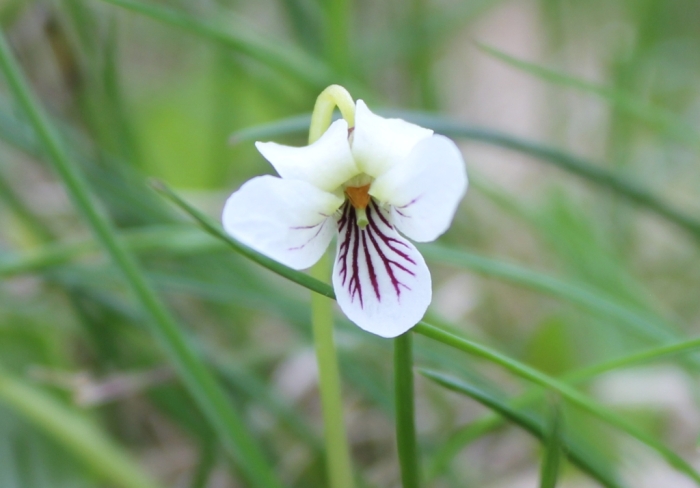Small White Violet
(Viola macloskeyi)
Small White Violet (Viola macloskeyi)
/
/

Clinton Little
CC BY 2.0














































Estimated Native Range
Summary
Small White Violet is valued for its low-growing, ground-covering habit and charming flowers, making it suitable for woodland gardens, shaded borders, and naturalized areas. It is also appreciated for its ability to thrive in moist, shady conditions where other plants may struggle. This violet prefers consistently moist, humus-rich soil and benefits from mulching to maintain soil moisture. While generally low-maintenance, it can be susceptible to leaf spots and rust. It is not known to be invasive and does not have aggressive roots, making it a gentle addition to diverse plantings.CC BY-SA 4.0
Plant Description
- Plant Type: Herb
- Height: 0.2-0.3 feet
- Width: 0.667-1 feet
- Growth Rate: Moderate
- Flower Color: White
- Flowering Season: Spring
- Leaf Retention: Deciduous
Growth Requirements
- Sun: Part Shade, Full Shade
- Water: High
- Drainage: Medium, Slow
Common Uses
Bank Stabilization, Bee Garden, Bird Garden, Border Plant, Butterfly Garden, Deer Resistant, Fragrant, Low Maintenance, Potted Plant
Natural Habitat
Moist meadows, swamps, and cool, shaded forest floors
Other Names
Common Names: Northern White Violet, Smooth White Violet, Wild White Violet, Sweet White Violet, Western Sweet Violet, Western Sweet-White Violet, Violette De Macloskey, Macloskey’s Violet
Scientific Names: , Viola macloskeyi, Viola pallens, Viola macloskeyi subsp. pallens, Viola macloskeyi var. pallens, Viola macloskeyi subsp. macloskeyi, Viola pallens var. subreptans, Viola macloskeyi var. macloskeyi, Viola pallens subsp. macloskeyi, Viola pallens subsp. pallens
GBIF Accepted Name: Viola macloskeyi F.E.Lloyd